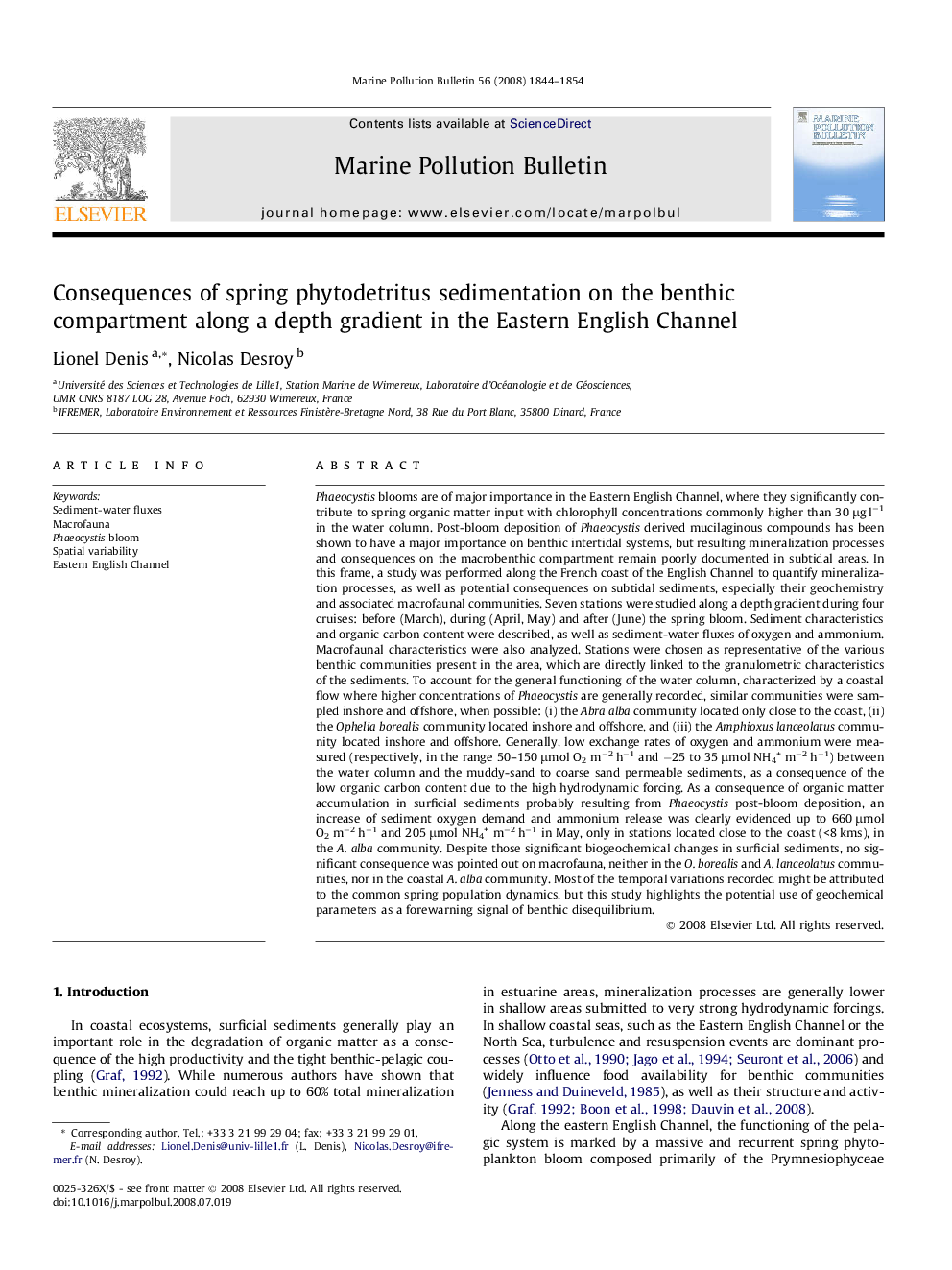| کد مقاله | کد نشریه | سال انتشار | مقاله انگلیسی | نسخه تمام متن |
|---|---|---|---|---|
| 4477218 | 1315714 | 2008 | 11 صفحه PDF | دانلود رایگان |

Phaeocystis blooms are of major importance in the Eastern English Channel, where they significantly contribute to spring organic matter input with chlorophyll concentrations commonly higher than 30 μg l−1 in the water column. Post-bloom deposition of Phaeocystis derived mucilaginous compounds has been shown to have a major importance on benthic intertidal systems, but resulting mineralization processes and consequences on the macrobenthic compartment remain poorly documented in subtidal areas. In this frame, a study was performed along the French coast of the English Channel to quantify mineralization processes, as well as potential consequences on subtidal sediments, especially their geochemistry and associated macrofaunal communities. Seven stations were studied along a depth gradient during four cruises: before (March), during (April, May) and after (June) the spring bloom. Sediment characteristics and organic carbon content were described, as well as sediment-water fluxes of oxygen and ammonium. Macrofaunal characteristics were also analyzed. Stations were chosen as representative of the various benthic communities present in the area, which are directly linked to the granulometric characteristics of the sediments. To account for the general functioning of the water column, characterized by a coastal flow where higher concentrations of Phaeocystis are generally recorded, similar communities were sampled inshore and offshore, when possible: (i) the Abra alba community located only close to the coast, (ii) the Ophelia borealis community located inshore and offshore, and (iii) the Amphioxus lanceolatus community located inshore and offshore. Generally, low exchange rates of oxygen and ammonium were measured (respectively, in the range 50–150 μmol O2 m−2 h−1 and −25 to 35 μmol NH4+ m−2 h−1) between the water column and the muddy-sand to coarse sand permeable sediments, as a consequence of the low organic carbon content due to the high hydrodynamic forcing. As a consequence of organic matter accumulation in surficial sediments probably resulting from Phaeocystis post-bloom deposition, an increase of sediment oxygen demand and ammonium release was clearly evidenced up to 660 μmol O2 m−2 h−1 and 205 μmol NH4+ m−2 h−1 in May, only in stations located close to the coast (<8 kms), in the A.alba community. Despite those significant biogeochemical changes in surficial sediments, no significant consequence was pointed out on macrofauna, neither in the O. borealis and A. lanceolatus communities, nor in the coastal A. alba community. Most of the temporal variations recorded might be attributed to the common spring population dynamics, but this study highlights the potential use of geochemical parameters as a forewarning signal of benthic disequilibrium.
Journal: Marine Pollution Bulletin - Volume 56, Issue 11, November 2008, Pages 1844–1854